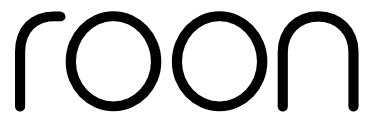In January 2015, I wrote a deck to help me talk to the music and audio industries about Roon, which was still months or more from launching. Depending on how you looked at it, the presentation was either a cool product vision or (as Danny complained) it was “full of lies.”

The problem was a pair of slides that (I thought) handily summarized how Roon was going to work. The first stated that “Roon understands all your content,” meaning that it would find and identify music in various file formats on your hard drives, your iTunes library, and on your NAS, as well as importing your playlists and favorites from your streaming service. All of that was true enough (sort of). The second slide more boldly claimed that “Roon plays with all your hardware” which was – there’s no nice way to dress this up – just completely untrue at that point.
A fresh start with a new vision
After years of building closed hardware systems at Sooloos and Meridian, we learned that our place in the world is designing user experiences, not audio hardware. To reach all the enthusiasts and audiophiles out there, Roon had to work with absolutely everything.
Unfortunately, it didn’t. Roon 1.0 worked, to varying degrees, with USB, AirPlay, and Meridian devices. It was a good start, but hardly “all your hardware.” Over the next few releases, we added support for Squeezebox, Google Cast, Sonos, HDMI, and a handful of proprietary integrations like Devialet AIR, Linn, and KEF. The Roon Remote apps on iOS, Android, macOS, and Windows also play audio, so the dream of playing music everywhere was ever closer to becoming reality.
As we expanded Roon’s support of audio devices, though, two issues emerged as show-stoppers: (a) there was uncertainty about whether a device would work with Roon, and (b) there was no simple, reliable way to play high-resolution audio over your network.
To solve the first issue, we created the Roon Tested program, which lets us collaborate with audio brands on testing and quality assurance. Manufacturers send us their products, and we confirm that Roon identifies them correctly and has their features and specifications in its database. It turns out that seeing your device pop up in Roon – fully identified and working as expected – goes a long way to building confidence.
The second issue was a bigger challenge. The broadly accepted standard for high-resolution streaming at the time was UPnP, which we actively chose not to support. While promising in principle, the UPnP standard (and its derivative, DLNA) makes sacrifices in user experience (specifically audio format support and rich metadata) that run contrary to our goals for Roon. Also, because there’s no certification mechanism for UPnP devices, implementations vary widely and the experience of using them is… variable.
Build it and they will come
As an alternative, we chose to develop a high-resolution streaming protocol (RAAT) that addressed the shortcomings of existing systems, and we built an SDK for hardware manufacturers to integrate into their devices. Armed with a data sheet and a dream, we set out to convince an industry that we had built something better.
That was December 2015. To our surprise and delight, it was only 30 days later that the world’s first Roon Ready device was unveiled at CES in Las Vegas – the Auralic Aries. Since then, over 80 brands have signed on to the program, making it the most widely-used high-resolution streaming protocol in the world.
Together, the Roon Ready and Roon Tested programs have changed the audio industry. By collaborating with manufacturers, we’ve created a new kind of experience, in which hardware from one company and software from another genuinely work together flawlessly. Roon subscribers can readily get support from a team that has access to the products they’re using, so both our subscribers and our partners are happy.
Which brings me back to my infamous deck. This week, five years since we launched Roon, we can finally say with a straight face that Roon plays with all your hardware.
